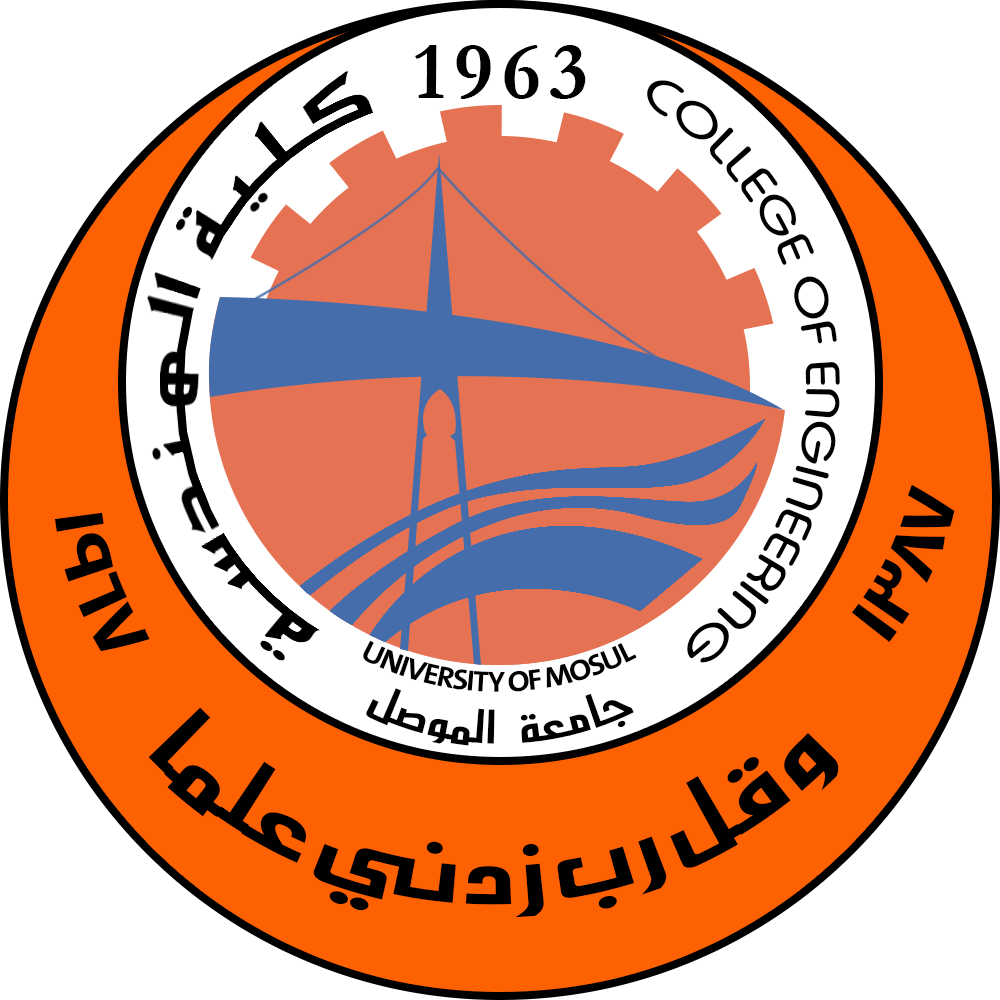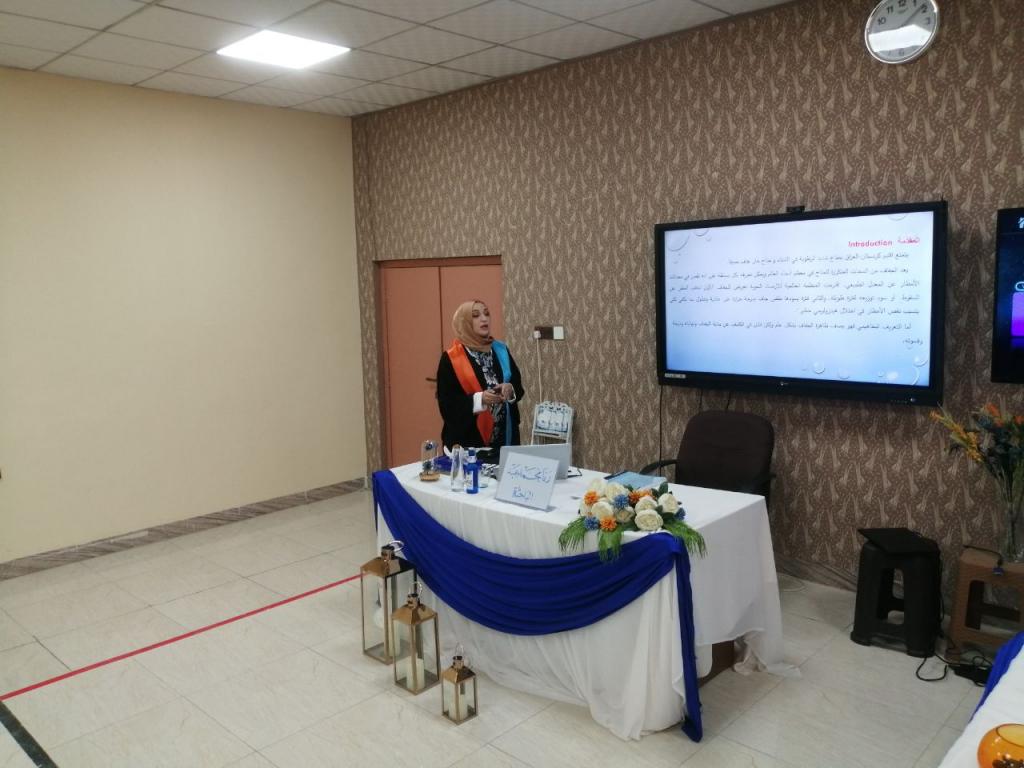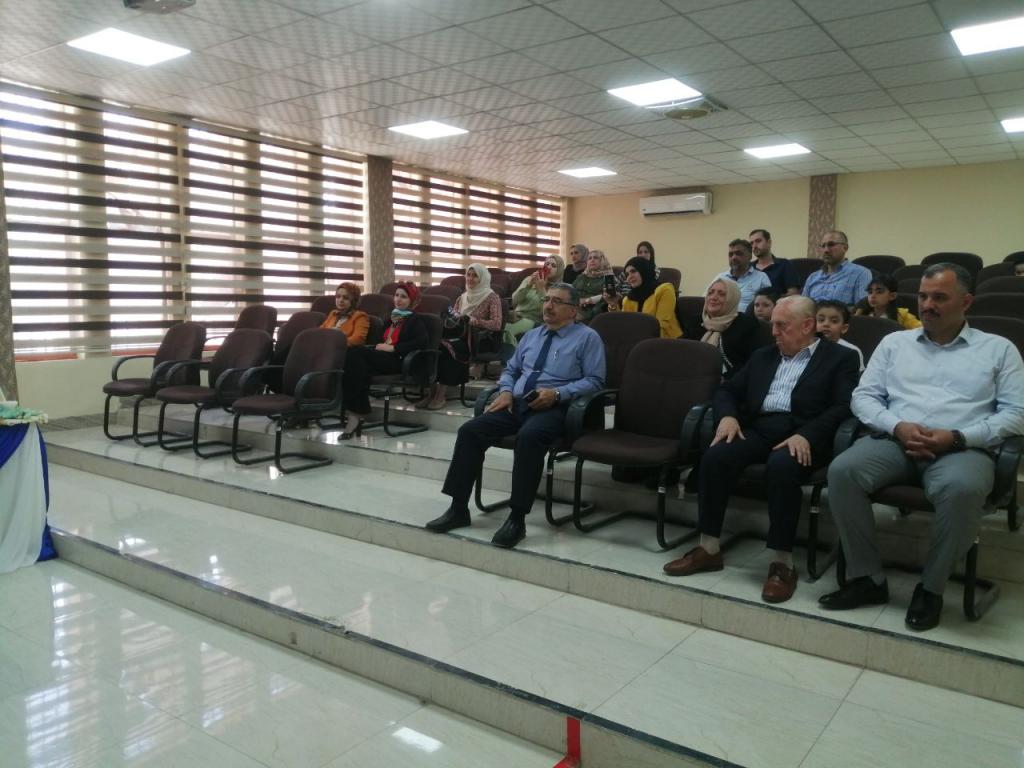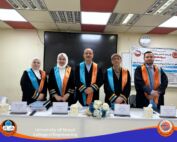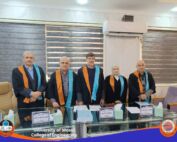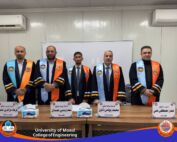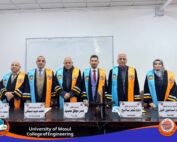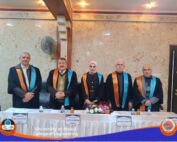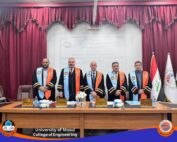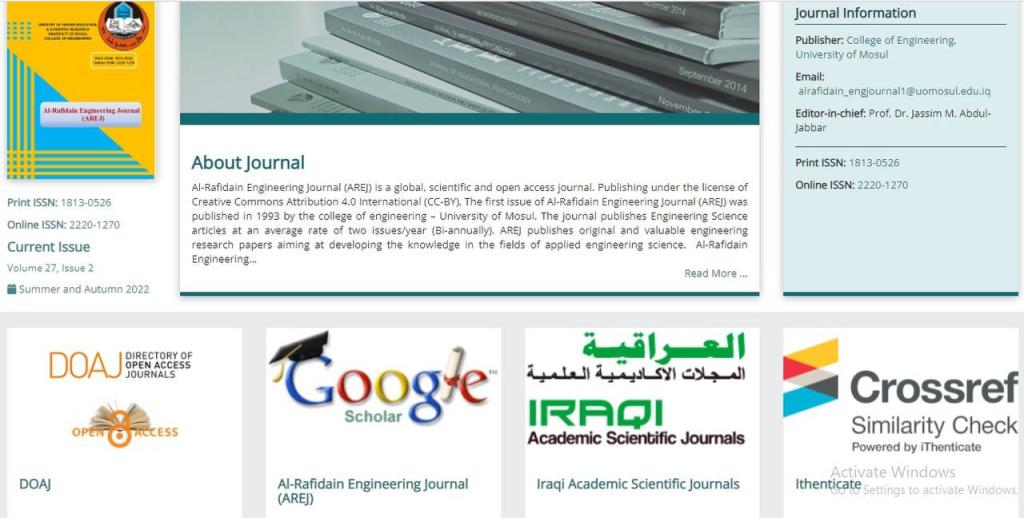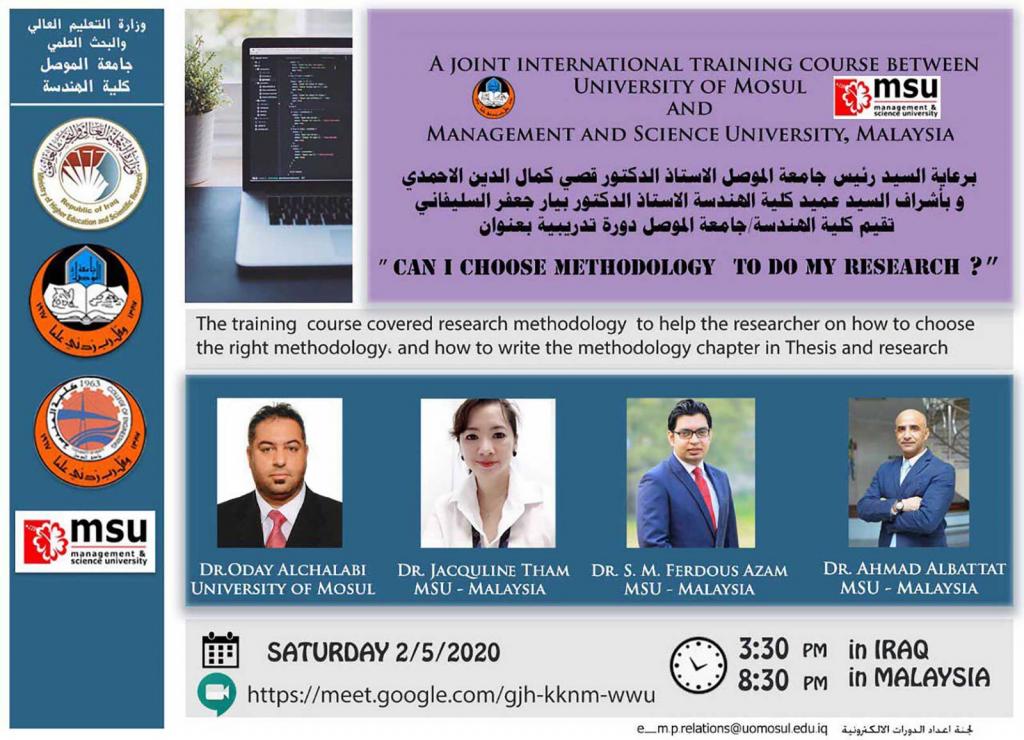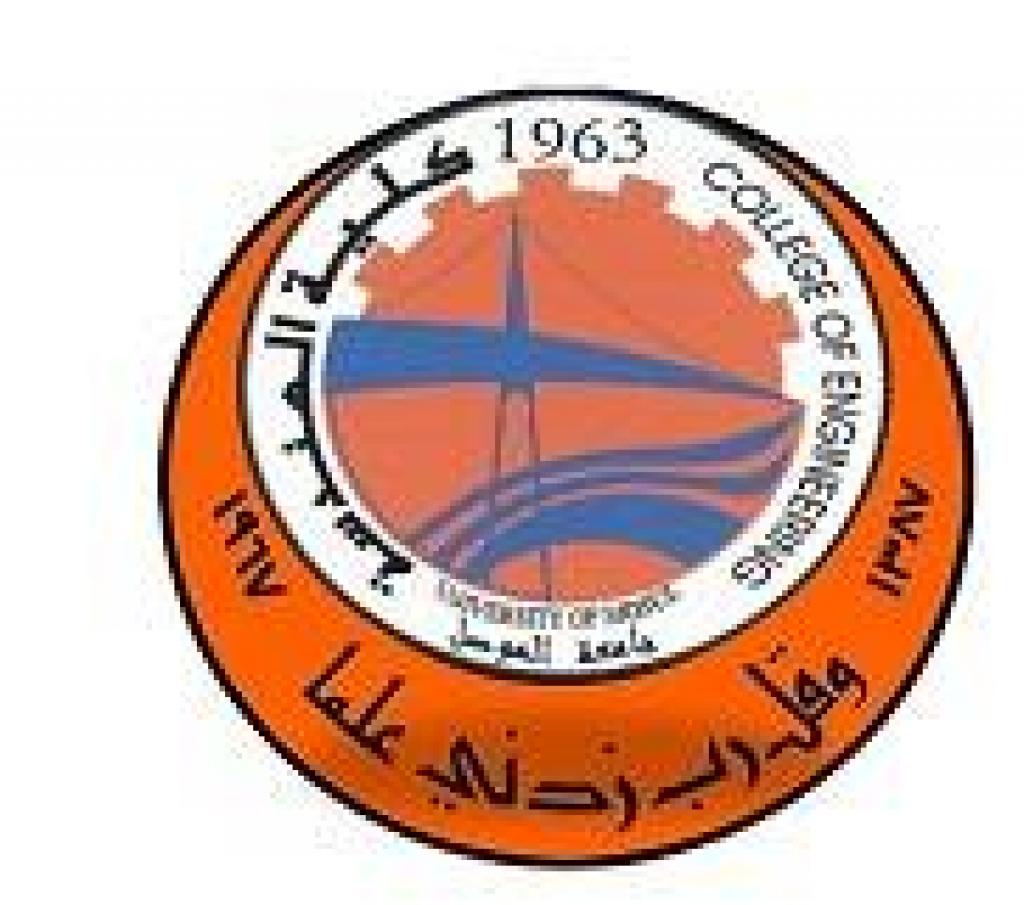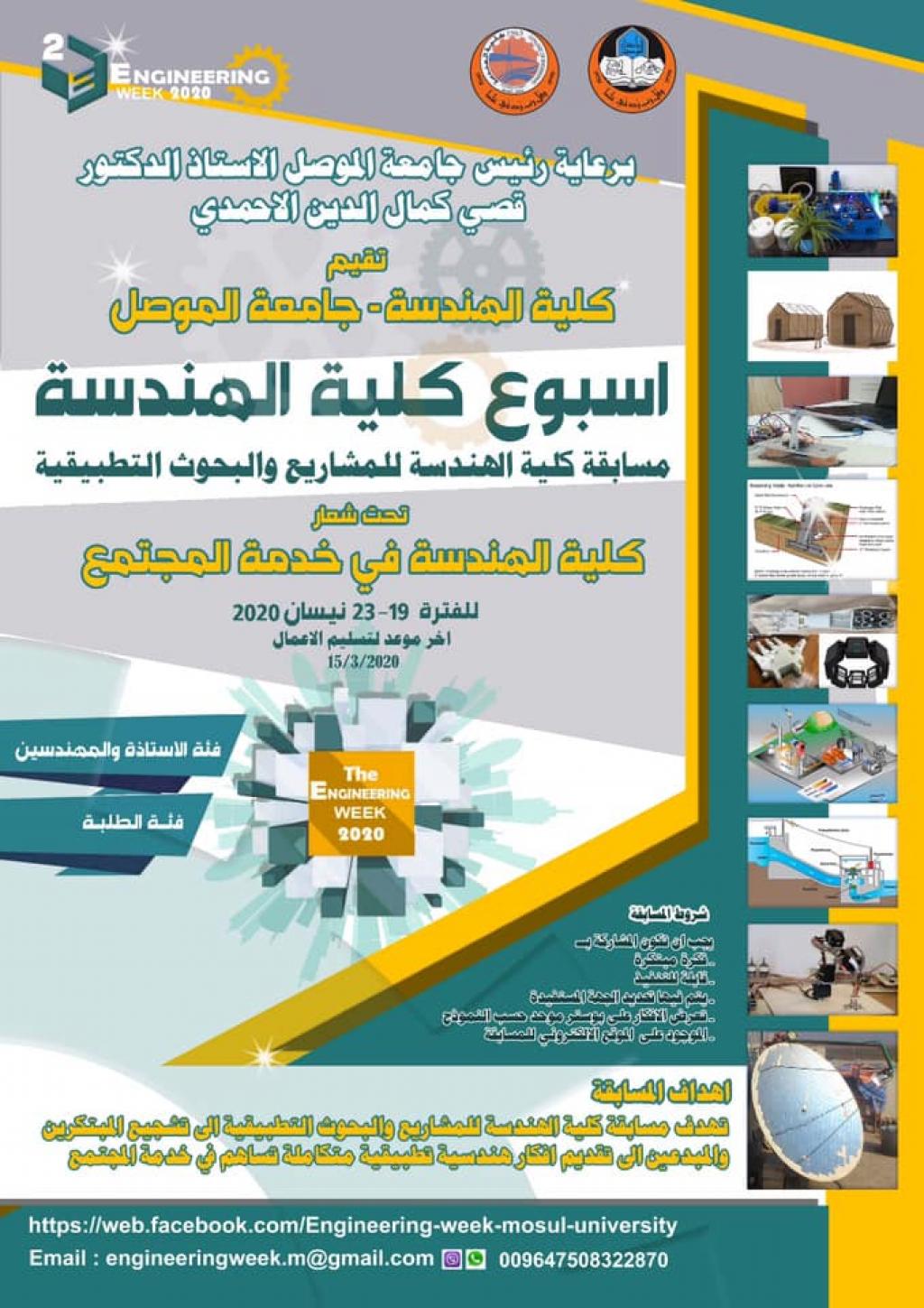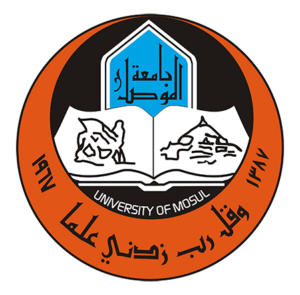9 June، 2022
Master Thesis on “Analysis of temporal and spatial drought characteristics in Kurdistan – Iraq using the Reconnaissance Drought Index (RDI)”
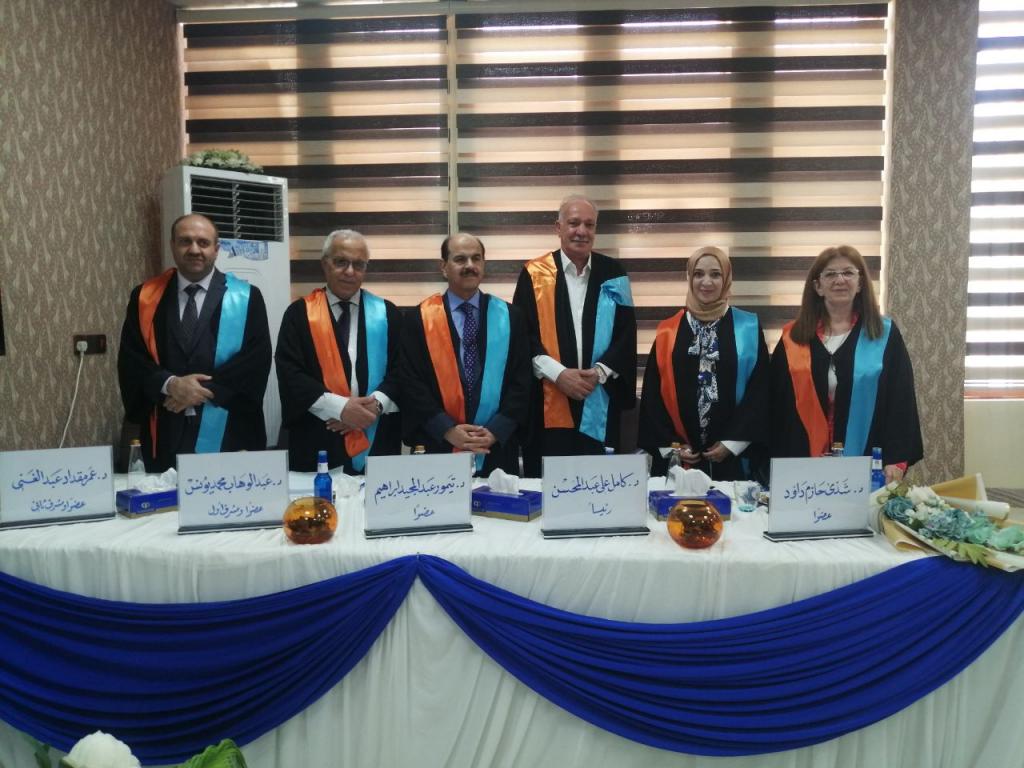
A master thesis was discussed in Department of Dams and Water Resources Engineering / College of Engineering at University of Mosul entitled “Analysis of temporal and spatial drought characteristics in Kurdistan – Iraq using the Reconnaissance Drought Index (RDI)” submitted by (Rana Mohammed Abd Qassab Bashi), Supervised By Dr. Abdel Wahab Mohammed Younes and Dr. Omar Miqdad Mahmood Agha on Thursday, June 09, 2022.In this study, the missing values of the observed monthly and annual temperature and rainfall series data were compensated and the homogeneity test was performed by adopting the following test methods: Pettitt test, Buishand test (BRT), Standard Normal Homogeneity test (SNHT), Van Neumann test (VNT) at the level of Trust (5%) for nine stations registered in different regions of the region for the period (1973-2020), which are (Zakho, Dohuk, Amadiyah, Erbil, Salah al-Din, Shaqlawa, Dokan, Sulaymaniyah, Darbandikhan). Then the spatiotemporal climatic drought was analyzed for the study area using the Standardized Precipitation Index (SPI) and the Reconnaissance Drought Index (RDI) and by applying the Thornthwaite and Blaneye-Criddle method to estimate potential evapotranspiration (PET) to detect the beginning and end of the detection period. Drought, where the results showed that the northwestern and southeastern regions of the region are characterized by drought rates more than the average, and the maximum values of drought were recorded in the years (1998-1999) and (2007-2008) for most of the stations of the study area.The future dryness of the indicator (RDI) was also forecast by applying the Thornthwaite method as the indicator most affected by temperature and using two models of artificial neural networks, namely: Recursive Multi-Step Neural Networks (RMSNN) and Direct Multistep Neural Network Step Neural Networks (DMSNN). It was found through the results that the (DMSNN) model is more accurate when compared with the (RMSNN) model, so the results of the (DMSNN) model were relied on to forecast three future years.
